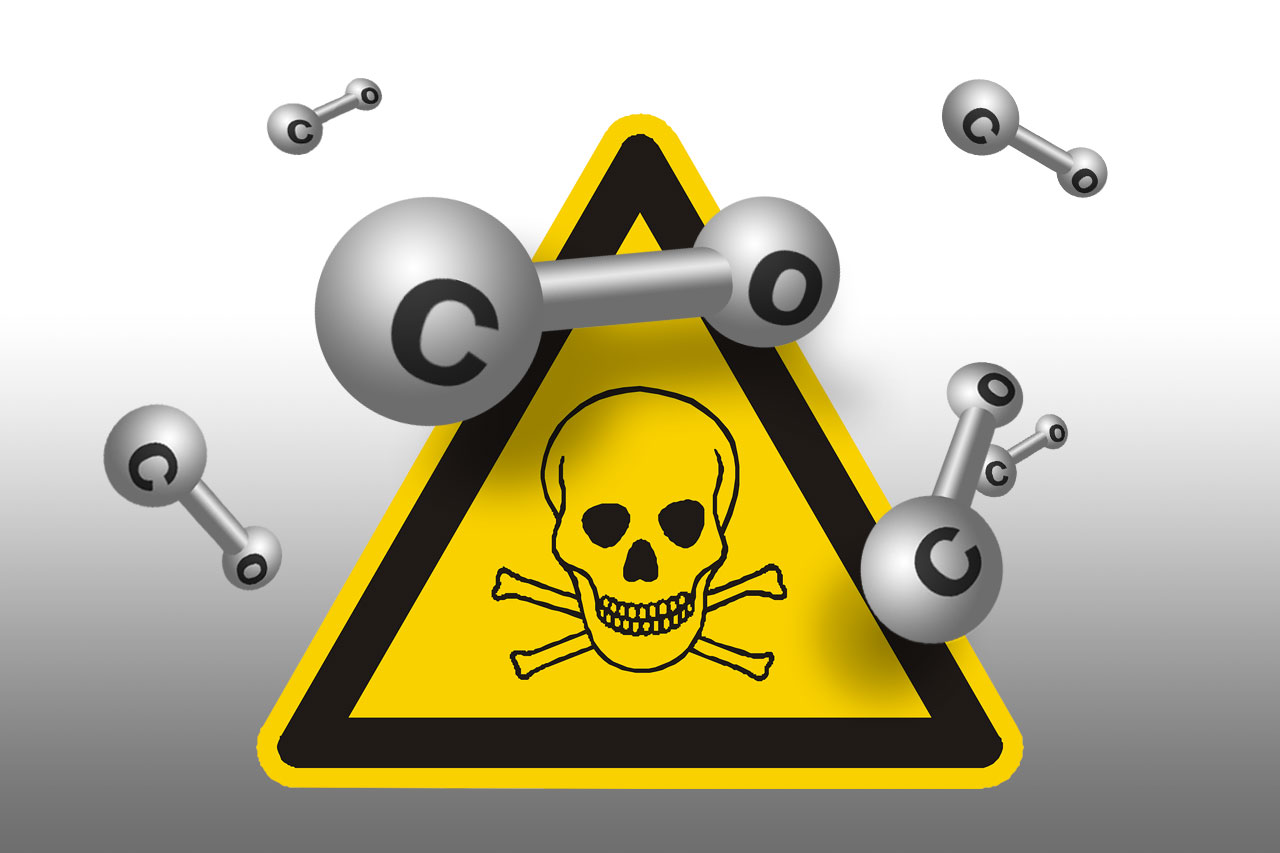Hazards of Carbon Monoxide
Carbon Monoxide (known by
the chemical symbol CO) is a colorless and practically odorless gas. It is
produced by the incomplete burning of solid, liquid, and gaseous fuels. We
cannot see, smell or taste it and sometimes it is referred to as the “Silent
Killer” because it can take your life without warning. Most people die in home
fires die at night, while asleep. They don’t wake up because the CO put them
into a deeper sleep. They are unable to respond and escape. CO gets picked up
by the cells in our blood even easier than the oxygen they are supposed to pick
up and the CO is carried to all the vital organs such as the heart and brain.
In addition to flu symptoms, it can cause vomiting, loss of consciousness,
brain damage and death.
Sources
of carbon monoxide
Carbon monoxide is
produced when fuels such as gas, oil, coal and wood do not burn fully. Burning
charcoal, running cars and the some from cigarettes also produce carbon
monoxide gas. Gas, oil, coal and wood are sources of fuel used in many
household appliances, including:-
- Boilers.
- Gas fires.
- Central
heating systems.
- Water
heaters.
- Cookers.
- Open
fires.
Symptoms
of CO poisoning
Carbon Monoxide can have
different effects on people based on its concentration in the air that people
breathe. Because you can’t smell, taste, or see it, you cannot tell that CO gas
is present. The health effects of CO depend on the level of CO and length of
exposure, as well as each individual’s health condition.
The initial symptoms of CO poisoning are similar to the flu (but without
fever). They include: -
- Headache
- Fatigue
- Shortness
of breath
- Nausea
- Dizziness
Many people with CO poisoning mistake their symptoms for the flu or are misdiagnosed which sometimes results in tragic deaths. Because CO replaces oxygen in the blood, it can make people feel sleepy. Or, if they are asleep, it can prevent people from waking up. At higher concentrations, people can experience impaired vision and coordination, headaches; dizziness, confusion, and nausea. In very high concentrations, CO poisoning can cause death.
Health
Hazard of Carbon Monoxide
Acute
Health Effects
The following acute
(short-term) health effects may occur immediately or shortly after exposure to
carbon monoxide:-
- Skin
contact with liquid carbon monoxide can cause frostbite.
- Inhaling
carbon monoxide can cause headache, dizziness lightheadedness and fatigue.
- Higher
exposure to carbon monoxide can cause sleepiness, hallucinations,
convulsions, and loss of consciousness.
- Carbon
monoxide can cause personality and memory changes, mental confusion and
loss of vision.
- Extremely
high exposure to carbon monoxide can cause to formation of
Carboxyhemoglobin and decrease the ability of blood carry oxygen. This can
cause a bright red color to the skin and mucous membranes causing trouble
breathing, collapse, convulsions, coma and death.
Who
is affected most easily by carbon monoxide?
The
following people are at highest risk in the workplace. This is because of their
greater need for oxygen or an impaired ability of their bodies to provide an
adequate supply:
- Pregnant
women
- The
physically active
- Older
workers
- Heavy
smokers
- Sufferers
from respiratory diseases
- Sufferers
from heart disease
Long-term
effects are caused by exposure to carbon monoxide
Effects produced by
exposure to carbon monoxide are generally reversible. That is, the effects
disappear following removal from exposure. In addition, effects produced during
one exposure are usually independent of those produced during any other.
Massive overexposure can cause permanent damage. Damage is most likely to occur
in the nervous system. These effects can include:-
- Loss of
memory
- Increased
irritability
- Impulsiveness
- Mood
changes
- Violent
behavior
- Verbal
aggression
- Personality
changes
- Learning
disabilities
- Mental deterioration
- Instability
when walking
What
can you do to prevent CO poisoning?
- Make sure
appliances are installed according to manufacturer’s instructions and
local building codes. Most appliances should be installed by
professionals. A carbon monoxide detector/alarm can provide added
protection, but is no substitute for proper use and upkeep of appliances
that can produce CO.
- Have the
heating system (including chimneys and vents) inspected and serviced
annually. The inspector should also check chimneys and flues for
blockages, corrosion, partial and complete disconnections, and loose
connections.
- Only burn
charcoal outdoors, never inside a home, garage, vehicle, or tent.
- Do not use
portable fuel-burning camping equipment inside a home, garage, vehicle, or
tent.
- Always
make sure to turn off any gas-powered engine (car, truck, motorcycle, ATV,
lawn mower, chain saw, or generator) inside an attached garage or
basement. Even if the garage door is open, you can still be affected or
killed by CO. If you must test the engine, take it outdoors before
starting it.
- Always
refer to the owner’s manual when performing minor adjustments or servicing
fuel-burning appliances, and get help from a professional if you are
unsure how to service such equipment
- Do not use
gas appliances such as ranges, ovens, or clothes dryers for heating your
home.
- If you use
a fuel-burning appliance for approved indoor uses (such as a heater), make
sure it is vented to the outdoors following manufacturer’s instructions.
Do not use an unvented fuel-burning appliance in any room with closed
doors or windows or in any room where people are sleeping.
- Install
and use an exhaust fan vented to outdoors over gas stoves.
- Open flues
when fireplaces are in use.
- Choose
properly sized wood-burning stoves that are certified to meet EPA emission
standards. Make certain that doors on all wood-burning stoves fit tightly.
- Have a
trained professional inspect, clean, and tune-up central heating system
(furnaces, flues, and chimneys) annually. Repair any leaks promptly.
